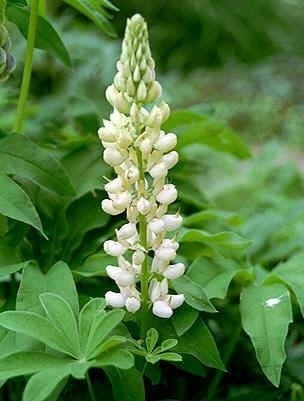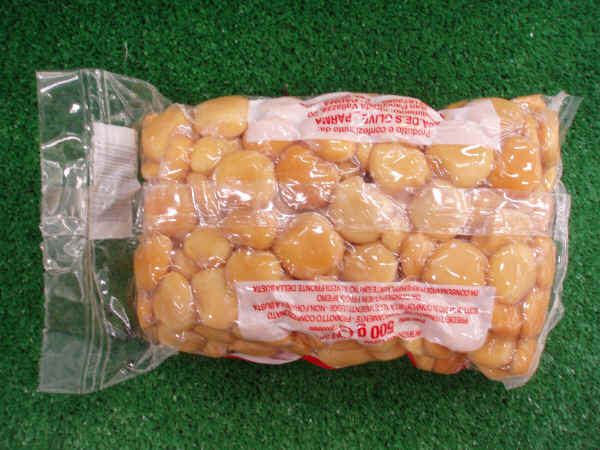LUPINE - ORGANIC
Have a question?

LUPINE - ORGANIC
Dettagli
Lupine is a grain legume known and widespread since ancient times in the Mediterranean Basin and in the Middle East for its remarkable adaptability to the most ungrateful, acidic and lean environments where every other legume fails, for its power to improve fertility of the soil and for its ability to produce a grain rich in proteins (up to over 35%) although not without various drawbacks. In fact, lupine seeds contain bitter and/or poisonous alkaloids which must be eliminated through prolonged washing so that the seeds can be used in human or animal nutrition.
In Italy, lupine cultivation collapsed following the depopulation of disadvantaged areas in which lupine had found its place in extremely poor cultivation systems.
The Italian regions where lupine is most widespread are Calabria, Lazio, Puglia and Campania.
New expansion prospects could open up for lupine with the selection of varieties with a very low alkaloid content (sweet varieties).
White lupine - Lupinus albus L. and Blue lupine - Lupinus angustifolius L. (photo www.net-garden.de )
Botanical characters
Lupins cultivated in Europe belong to three species: white lupin (Lupinus albus), yellow lupin (L. luteus) and blue or light blue lupin (L. angustifolius).
In Italy the only interesting species, because it is the most suitable for the climate and the prevailing soils, is the white lupine, while the other species are more favored by the acidic soils and the humid and cool summer climate.
The white lupine is characterized by the following traits. Annual plant, erect, up to 1.5 m tall, little branched, pubescent. Robust, taproot, which hosts numerous globose tubercles produced by Rhizobium.
The leaves are alternate, palmate-compound, that is, composed of a long petiole at the top of which 5-9 entire ovate-lanceolate leaflets are inserted, glabrous on the upper surface, often velvety on the lower one.
The flowers are white, large, showy, gathered in racemes on the terminal part of the stem and branches.
After fertilization, which is mainly autogamy, legumes are formed which are long, erect, leaning against the axis of the raceme, pubescent, flattened, containing numerous (3-6) seeds.
The seeds are large, white, lenticular, up to 15 mm in diameter, weighing from 0.3 to 0.6 g per seed.
Environmental needs
As mentioned, the peculiarity of lupine is that it thrives on acid soils. It is only in these that it deserves consideration, in fact lupine does not grow in calcareous soils and, on the other hand, other better quality grain legumes can be grown there.
The need for acidity or, in other words, the tolerance to limestone varies with the species: L. albus is the most tolerant (up to pH 7.2), L. luteus is the least tolerant (optimal pH between 4, 8 and 6).
All lupins, without exception, greatly fear waterlogging and root asphyxiation, so only loose and well-drained soils are suitable for them.
The sub-acid soils of volcanic origin present from Lazio to Campania are the most suitable for lupine.
As regards climatic needs, the most important element is resistance to frost: only the white lupine resists the cold enough to be able to be sown in autumn in Italy and on the other hand tolerates the heat and drought that it encounters here in the of maturation.
Variety
Lupine genetic improvement began several decades ago with the aim of lowering the alkaloid content of the seeds. "Sweet" foreign varieties of both white and blue lupine are now available: all of them must be checked to see if they are suitable for autumn sowing in Italy.
New objectives that genetic improvement has begun to pursue are resistance to cryptogams, indehiscence of the pods, tolerance to limestone, resistance to cold.
Cultivation technique
Lupine should be considered as an improving crop that alternates with the autumn cereal and which requires a technique no less accurate than other crops. Therefore: plowing of the stubble at medium depth, as early as possible before sowing, and harrowing to prepare the seed bed which, moreover, does not require much fine tuning.
The sowing of white lupine in Italy is done in October-November, in rows 0.25-0.35 m apart with a suitable number of seeds to ensure a population density of 20-30 plants per m2; with the most common types requiring 100-150 kg/ha of seed. Lupine is able to compensate for investment deficiencies by increasing the branching of existing plants.
The fertilization to be ordinarily adopted is phosphate: it can be assumed that 60-80 kg/ha of P2O5 largely meets the needs of the crop. Potassium fertilization is certainly not necessary in the case of sub-acid soils of volcanic origin, while it can be useful in siliceous soils, acidic due to leaching of cations. Nitrogen is never necessary, thanks to the active symbiotic nitrogen fixation that takes place in the root tubercles, abundant in lupine.
Weed control can be achieved with weeding; the herbicides applicable to lupins are included among those already mentioned for other grain legumes.
 Vacuum packed lupins (photo www.agraria.org )
Vacuum packed lupins (photo www.agraria.org )
Collection and use
Maturation is reached in June-July. Traditionally, lupins were harvested before fully ripening, cutting or uprooting the plants, leaving them in the field to complete drying and then threshing them separately.
Harvesting with a combine harvester is hindered by the schooling with which the pods ripen, by the easy dehiscence of the pods themselves and by the possibility that the seeds are broken by the working parts of the combine harvester.
The average productions resulting from the statistics are rather low, but with a suitable cultivation technique productions of 2.5-3.5 t/ha of grain should be achievable.
Adversity and parasites
Cryptogamic adversities that can cause serious damage to lupine are root rot (Fusarium spp., Rhizoctonia solani, Phythium debaryanum), favored by asphyxiated soil. Several viruses can also attack this species


